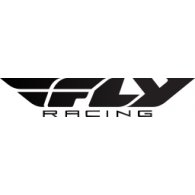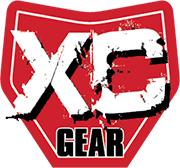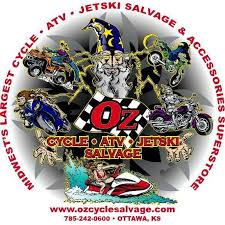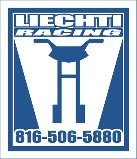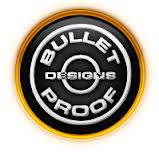FORWARD MOTION HARE SCRAMBLE CHAMPIONSHIP
PURPOSE
The purpose of the Forward Motion Hare Scrambles Championship is to develop a system of competitive Hare Scrambles in the midwest, whereby a point accumulation process will determine awards for overall and for all classes. The season will be a calendar year.
GENERAL
1. Generally AMA Hare Scramble rules apply except as modified by this rulebook.
2. Each participant in competition has the responsibility to assess the safety aspects of the facilities and conditions and must assume the risk of competition.
3. Each sponsoring club/promoter is required to provide qualified Emergency Medical personnel at all events.
4. Any unsportsmanlike conduct will not be tolerated and is grounds for disqualification.
5. Participants are responsible for their actions and that of their crew. Any interference with track officials or conduct deemed to be unacceptable by any member of a riders party may result in that participant’s disqualification.
6. Adequate and clean toilet facilities must be provided at each event location.
7. Promoters are responsible for having current information about event cancellation on their telephone recording by 6:00 AM the morning of the event and arrangements made to post the news on FMHSC official website.
8. Participants are responsible for checking with promoters and/or fmhsc.com prior to an event regarding information concerning cancellations or postponements.
9. If an event is not held as scheduled, it should be clarified at that time as to whether it is postponed or cancelled.
10. Each promoter must have a sweep crew during and after the event.
11. Full course participants must be at least 10 years of age or older. Event participants 10 and 11 years of age must be accompanied by an adult.
MEMBERSHIP
1. There are no membership fees; however there will be a $15.00 fee for riders wanting season points toward a year end award. Entering any event, or signing the application/signup card, is all that is needed to be a Forward Motion Hare Scramble member for that calendar year. Riders electing to pay the $15.00 year end points fee are the only riders to receive yearly points. Example: If you finish 3rd in an event and the top two are not season points riders, you will receive 1st place points for that event in the yearly standings.
Season points begin at the first event the points fee is paid and forward from that time. Events prior to the paid fee will not be included in the season points.
FINANCIAL
1. All expenses for the operation of the series shall be derived from an entry assessment for each entry at each hare scrambles. The assessment will be $6.00 for each entry and will be paid at the end of each race day. This fee also includes rider sign up and scoring.
2. Entry fees are $50.00 for experts, $15.00 for Junior and $40.00 for all other classes. Peewee $10.00. Gate fees will be $10.00 for adults and children 12 and over. Age 11 and under will be free.
SCORE KEEPING
1. Each rider will be scored electronically.
2. Riders wishing to be scored must complete one lap of the race. Only complete laps will be scored. A rider that does not complete any laps will not receive a score.
3. Results will be posted for riders viewing upon completion of each race. There will be a 15 minute protest period. If an error is discovered after the 15 minute protest, it can only be corrected for scoring series points.
4. After the date of an event has passed, series points and race results may only be changed with the approval of the majority of the series officials.
POINTS KEEPING
1. The points system is as follows:
|
Finish Position |
Class Points |
Overall Points |
|
1st |
22 |
24 |
|
2nd |
20 |
22 |
|
3rd |
18 |
20 |
|
4th |
17 |
18 |
|
5th |
16 |
17 |
|
6th |
15 |
16 |
|
7th |
14 |
15 |
|
8th |
13 |
14 |
|
9th |
12 |
13 |
|
10th |
11 |
12 |
|
11th |
10 |
11 |
|
12th |
9 |
10 |
|
13th |
8 |
9 |
|
14th |
7 |
8 |
|
15th |
6 |
7 |
|
16th |
5 |
6 |
|
17th |
4 |
5 |
|
18th |
3 |
4 |
|
19th |
2 |
3 |
|
20th |
1 |
2 |
2. In the event of an end of the year tie in total points, the tie will be broken by first determining which rider had the higher number of first place finishes for the entire year. If a tie still exists then the higher number of second place finishes for the entire year will be used and so forth until the item is resolved. The resolution may extend beyond the total races counted for the season.
3. Only 70% of the races for a season are counted toward season points. To determine the number of races counted in a season, take the number of points paying events, multiply by 70%, and round to the nearest whole number. One-half numbers will round down. If you earn points in more races than that, the best 70% are used for scoring. The lowest scores are ignored or become throwaways. This is automatically calculated into any points that are posted after 70% of the races have occurred.
|
Total Events |
Actual 70% |
Counted |
|
1 |
1 |
1 |
|
2 |
1.4 |
1 |
|
3 |
2.1 |
2 |
|
4 |
2.8 |
3 |
|
5 |
3.5 |
3 |
|
6 |
4.2 |
4 |
|
7 |
4.9 |
5 |
|
8 |
5.6 |
6 |
|
9 |
6.3 |
6 |
|
10 |
7 |
7 |
|
11 |
7.7 |
8 |
|
12 |
8.4 |
8 |
|
13 |
9.1 |
9 |
|
14 |
9.8 |
10 |
|
15 |
10.5 |
10 |
|
16 |
11.2 |
11 |
|
17 |
11.9 |
12 |
|
18 |
12.6 |
13 |
|
19 |
13.3 |
13 |
|
20 |
14 |
14 |
4 One work average will be substituted for the lowest score of the best 70%. This will allow one work average points to be used randomly and not necessarily at the event that was worked. The second work average awards first place points and can only apply to the event that was worked. Additionally, the rider is not allowed to race that event. The order of the work averages can be switched but the first place points will not be added until both averages have been worked.
5 If a series official determines a rider needs to be moved to a different class (this could be up, down or lateral), the rider may carry points to the new class. These points will be determined by where the rider would have finished if he/she had entered into the class they were moved to. This would also include a rider who elects to move up a class and presents this request to an official.
WORK AVERAGE BONUS POINTS
1. Participants may earn race points by assisting race promoters to either, set up, run, or clean up after an event.
2. Work bonus points will be awarded only when a work day has been completed. A maximum of two work bonuses will be allowed per person.
3. A work day will consist of adequately assisting the promoter as he/she requires.
4. It is up to the discretion of the promoter as to whether a work average is to be awarded to an individual rider.
5. Only one work average is allowed per event regardless of total amount of time worked.
6. Participants will be accepted on a first come first serve basis.
7. Participants that volunteer and then do not honor their commitment may be excluded from future work bonus programs at the promoter’s discretion.
8. One work average is calculated by summing the rider’s top 5 finishes, dividing by 5, and rounding to the nearest whole number. This work average allows the rider to race the event as well.
9. A second work average is calculated such that the rider receives first place points in their respective class and for the overall. This work average is intended to increase work day help but does not have to be done on race day. This work average does not allow the rider to race that event. When arrangements have been made in advance, it is possible to earn this work average before the top 5 calculated work average. If the rider fails to work the second work average, the first place points will be forfeited.
10. Promoters must send the names of riders receiving a work average to the point’s keeper immediately after the event. The list must be completed the Saturday before the event. This must be done to ensure fairness for all involved.
EVENT GUIDELINES
1. All races should be a minimum of one hour and fifty five minutes in length for all events. JR class will finish on the top of the hour after they begin. The amount of time an event actually runs may be shortened if necessary at the official’s discretion; however, it should be a minimum of 1 hour in length when possible.
2. No studded tires will be allowed on the course at any time.
3. STARTS: Each class should be started separately, at exactly one minute intervals, and in the following order: AA / 100’s, A / 200’s, B / 300’s, B Intermediate / 400’s, B Vet / 500’s, Vet 40 / 1000’s, C / 600’s, C Vet /700’s, Sportsman /800’s, Trailrider / 900’s, Fun / 1200’s and Junior / 1100’s. Junior will start two minutes after the Trailrider and stop at the top of the hour (Approx. 55 minutes total race time)
4. PROTESTS: All protest must be taken to the promoter for the race in question and then if necessary to the series officials.
5. An event stopped by the referee before 50% of the race is complete should be restarted from the beginning. The restarted event may be shortened at the referee’s discretion; however, it should be a minimum of 1 hour in length.
6. The course shall be at least five miles in length.
7. On single race days, gates must open no later than 8:00 AM. All riders must sign up prior to riding practice. Sign up will begin at 9:00 and practice will be from 9:30AM to 11:30AM and will promptly stop at that time. Riders meeting will be at 11:40. The race will start at 12:00.
8. On two race days, gates must open no later than 8:00. A two race format will be adhered to.
9. On two race days, riders can only be on the track during practice and during the event they are racing in. Riders from one race must not be on the track during the opposite race unless the promoter has approved it and even in that circumstance the rider must not be interfering with the race in any way.
10. Riders are allowed to practice starts during practice times; however, riders must not return by riding opposite to the course direction.
11. ABSOLUTELY no practice starts or “clean out” runs will be allowed as riders are assembling for the start unless there is a designated area for “clean outs”.
12. The start of each race will usually be dead engine with the rider on or off the bike. A live engine motocross style start is allowed if the facility has a starting gate that can accommodate the entire row of riders. The starter will use a large card with a number 30 on it. This means 30 seconds or less remaining before the start of the row. The starter will drop the card to start the row or drop the gate if it is a live engine start.
13. The finish line will be clearly marked before the scoring lanes. There will be no passing beyond this line at any point in the race.
14. The referee can penalize any rider for being off of the course, cutting the course, or violating any rule. Penalties should begin with adding one to five minutes to the rider’s final lap, increasing to the docking of one lap, and be progressively more severe based on the violation or repetition of violations.
15. The referee can penalize a rider for going too fast through scoring, striking scoring personnel or equipment, or not displaying correct rider numbers.
16. It will be the responsibility of the promoter to clearly mark the course. Any area that could be questionable should be clearly marked with two arrows or ribbon marking both sides of the course. Riders must stay between any double markings on the course. Riders must never go through or under any ribbon or banner.
17. Unless otherwise instructed at the rider’s meeting, riders must not ride more than 30 feet from the course marking arrows.
PERCENTILES / CLASS CHANGES:
1. The scoring system allows for categorizing riders into classes based on speed. When a race has been completed the top riders speed may be used. That speed will be the 100% baseline all other riders will be compared to for that race. The average of all completed lap times of all riders will be compared to this 100% to determine every rider’s percentile. Using a simple example; if 100% for that race is a 24 MPH average and a rider’s average speed was 21 MPH then that rider’s percentile is 87.5. (or divide the fastest overall lap by a rider’s best lap to determine what percentile a rider is capable of) This system enables similar speeds to be grouped together.
2. A percentile range has been given to each class name. Class names are unnecessary but used to help riders pick the correct class. After each race, all riders will be evaluated to see if their percentile is in the range for that class. Going above a percentile range is called “breaking out”. To allow for fluctuations, a break out system has been developed. Each breakout point is recognized and stored. When a rider breaks out a total of 10 points, the rider will move up. One example would be a rider who does not enter the correct class and breaks out by 10 points on the first race. A second example would be a rider who breaks out two points over five races. Once a rider has completed seven races, for that season, the rider will remain in that class unless the rider chooses to move up.
3. If a rider is moved up the rider can carry points to the new class. This is done by evaluating the overall results for a given race and then determining where a rider would have finished had they been in that class on that day. An example would be a rider who finished 1st in B and would have finished 4th in A. 4th Place points will be awarded as the carry up points. This is carefully done so that no riders in the upper class are bumped down by the move up and no riders in the lower class move up because of the vacancy. In the example above, the results will now reflect the first place position was vacated and the two 4th place positions in the A class for that race.
4. If a rider is moved down, the points carry in the same fashion. A rider who wants to move down can submit his request to the series official. Percentile results will be evaluated to determine if the rider should be moved. A rider who can not reach the minimum speed for his class can be moved down, after the rider completes a total of three races.
5. A rider cannot voluntarily move up AND carry points during the last three events. A rider can move up and race a class but no points will be carried for those events. Mandatory move ups can be done right up to the last race of the year if needed.
6. If a rider is told to move up and does not do so, the rider will be disqualified for that event and no points will be earned.
THE NUMBERING SYSTEM:
Top 10 Overall finishers
Numbers 1 through 10 are reserved for riders who finished in the top 10 overall in the previous racing season. These top 10 numbers will generally be a mixture of the AA Expert class and the A Intermediate class.
Numbers beginning with 1:
11 through 19 will be the top nine finishers in the AA class.
110 through 199 will be all other AA riders.
101 through 109 are reserved for riders who have advanced from another class.
Numbers beginning with 2:
21 through 29 will be the top nine finishers in the A class.
210 through 299 will be all other A riders.
201 through 209 are reserved for riders who have advanced from another class.
Numbers beginning with 3:
31 through 39 will be the top nine finishers in the B class.
310 through 399 will be all other B riders.
301 through 309 are reserved for riders who have advanced from another class.
Numbers beginning with 4:
41 through 49 will be the top nine finishers in the B Intermediate class.
410 through 499 will be all other B Intermediate riders.
401 through 409 are reserved for riders who have advanced from another class.
Numbers beginning with 5:
51 through 59 will be the top nine finishers in the B Vet class.
510 through 599 will be all other B Vet riders.
501 through 509 are reserved for riders who have advanced from another class.
Numbers beginning with 6:
61 through 69 will be the top nine finishers in the C class.
610 through 699 will be all other C riders.
601 through 609 are reserved for riders who have advanced from another class.
Numbers beginning with 7:
71 through 79 will be the top nine finishers in the Vet C class.
710 through 799 will be all other Vet C riders.
701 through 709 are reserved for riders who have advanced from another class.
Numbers beginning with 8:
81 through 89 will be the top nine finishers in the Sportsman class.
810 through 899 will be all other Sportsman riders.
801 through 809 are reserved for riders who have advanced from another class.
Numbers beginning with 9:
91 through 99 will be the top nine finishers in the Trailrider class.
901 through 999 will be all others in the Trailrider class.
Numbers beginning with 10:
1001 through 1009 will be the top nine finishers in the Vet 40 class.
1010 through 1099 will be all others in the Senior class.
Numbers beginning with 11:
1101 through 1109 will be the top nine finishers in the Junior class.
1110 through 1199 will be all other Junior riders.
|
Numbers |
Class |
Entry Fee |
Speed % |
Class Information |
|
100-199 |
AA |
$50 |
100%-95.1% |
Pro Class, Cash Payback 100% payback to top 33% of riders |
|
200-299 |
A |
$40 |
95%-89.1% |
A Class any age |
|
300-399 |
B |
$40 |
89%-84.1% |
B Class any age |
|
400-499 |
B Intermediate |
$40 |
84%-79.1% |
Above average Class any age |
|
500-599 |
B Vet |
$40 |
84%-79.1% |
Above average class for riders 35 and over |
|
600-699 |
C |
$40 |
79%-74.1% |
For the Average Woods Rider any age |
|
700-799 |
C Vet |
$40 |
79%-74.1% |
For the Average Woods Rider 35 and over |
|
800-899 |
Sportsman |
$40 |
74%-68.1% |
For riders too fast for trailrider class but not ready for the C class all ages |
|
900-999 |
Trailrider |
$40 |
68% & Below |
Entry level Class |
|
1000-1099 |
Vet 45 |
$40 |
74% & Below |
Experienced riders 45 and over |
|
1100-1199 |
Junior |
$15 |
No speed rules |
1 hour. Ages 10 to 15 (10 and 11 must have an escort) Women any age but all bikes limited to 19" front wheel and smaller |

